
Private Tour Évora City - Wine Tasting - Beautiful Village of Monsaraz
1 day
Private
About this activity
Itinerary
This is a typical itinerary for this product
Stop At: Templo Romano de Evora (Templo de Diana), Evora, Evora District, Alentejo
The Roman temple of Évora, known as the Temple of Diana, is located in the city of Évora, is part of the historical center of the city, which was classified as a World Heritage by UNESCO. Ranked as National Monument. It is one of the most famous landmarks of the city and one of the most significant symbols of the Roman presence in Portuguese territory.
Duration: 10 minutes
Stop At: Igreja de Sao Francisco, Evora, Evora District, Alentejo
The Church of St. Francis in Evora is a church of Gothic-Manueline architecture. Built between 1480 and 1510 by masters of Pedraria Martim Lourenço and Pero de Trilho and decorated by the royal painters Francisco Henriques, Jorge Afonso and Garcia Fernandes, it is closely linked to the historical events that marked the period of maritime expansion of Portugal. This is evident in the symbols of the monumental nave of the vaulting vault: the cross of the Order of Christ and the emblems of the founding kings, D. João II and D. Manuel I.
According to tradition, Gil Vicente was buried in this church in 1536.
Duration: 20 minutes
Stop At: Capela dos Ossos, Evora, Evora District, Alentejo
The Bones Chapel is one of the most famous monuments in Évora. It was built in the 17th century on the initiative of three Franciscan monks who, in the spirit of the time (religious counterrevolution, according to the norms of the Council of Trent), intended to convey the message of the transience of life, as can be seen from the famous warning at the entrance: "We bones here we are waiting for you." Besides the spiritual question, there was also a physical question, which is; there were in the region of Évora forty-two monastic cemeteries that were occupying too much space and strategic places that many intended to use for other purposes. So they decided to remove the skeletons from the earth and use them to build and decorate the chapel.
Its walls and eight pillars are "decorated" with bones and skulls connected by brown cement. The vaults are of brick plastered to white, painted with allegorical motifs to death. It is a monument of a penitential architecture of ornate arches with rows of skulls, cornices and white ships. It has been calculated around five thousand bones, including skulls, vertebrae, femurs and others, coming from cemeteries, located in churches and convents of the city, and which were connected with brown cement and are arranged by the walls, ceiling, columns and even outside . There are still two whole skeletons hanging by chains on one of the walls, one of which is that of a child.
Duration: 30 minutes
Stop At: Adega Ervideira, Monsaraz, Evora District, Alentejo
Guide Visit the Wine Cellars and tasting 10 Wines
The estates of Monte da Ribeira and Herdadinha both belong to the Leal da Costa family, which can be traced back to the Count of Ervideira, a successful farmer who lived between 19th and 20th centuries. The Count, who received his nobel title from king Carlos I in recognition for his social work in the region, began producing wine in 1880, as one can see in the bottles the company proudly exhibits in its wine tasting room. With 160 ha of vineyards, divided between the Vidigueira and Reguengos estates, Ervideira’s administration is held by the family matriarch D. Maria Isabel and her six children, being Duarte Leal da Costa the executive director. The oenological direction is under direction of Nelson Rolo.
Duration: 2 hours
Stop At: Monsaraz Castle and Walls, Monsaraz, Evora District, Alentejo
2377/5000
The medieval castle
At the time of the Christian Reconquest of the Iberian Peninsula, the town was initially conquered by the forces under the command of the legendary Geraldo Sem Pavor (1167). After the defeat of D. Afonso Henriques (1112-1185) in Badajoz (1169) was recovered by the Almoado Caliphate under the command of Abu Iacube Iúçufe (1173), to be definitively conquered by D. Sancho II (1223-1248), with the aid of the Order of the Templars, in 1232, to whom it made the donation of these domains. From this time we were reminded of the Templar knight Gomes Martins Silvestre, settler of Monsaraz, whose tomb is currently in the Mother Church of Santa Maria da Lagoa.
D. Afonso III (1248-1279), in order to increase his settlement and defense, granted him a Charter of Foral in 1276. In this period, the settlement action of Monsaraz is linked to the figure of the knight Martim Anes Zagallo, who is believed to have as the mayor of the town and his castle, having begun the construction of the new Alcáçova, at which time the primitive Mother Church of Santa Maria da Lagoa and other buildings began.
Castle of Monsaraz.
In the context of the crisis of 1383-1385, the village and its castle were attacked by English archers under the command of the Earl of Cambridge, supposedly allies of Portugal, falling in the early summer of 1385 under the rule of the King of Castile , when it invaded the Alentejo. Abandoned by the Castilian troops in march, they were recovered by the forces loyal to D. João I (1385-1433), under the command of the Constable D. Nuno Alvares Pereira, before the battle of Aljubarrota. In 1412, by donation of the Constable to his grandson D. Fernando, Monsaraz became part of the domains of the House of Braganza.
Under the reign of D. Manuel I (1495-1521), the town and its castle are figured by Duarte de Armas (Book of Strengths, c.1509). In 1512, the sovereign granted the New Foral to the village.
From the Restoration War to our days
In the context of the Restoration War of Portuguese Independence, due to its proximity to the Guadiana river and the Spanish border, the Council of War of D. João IV (1640-1656) determined the modernization of its defenses, involving the village with adapted walls to the shots of the artillery of the time, receiving traces abaluartados in the style Vauban, with project of Nicholas of Langres and Jean Gillot: the Fort of San Bento de Monsaraz.
Duration: 2 hours
Read more
Show less
This is a typical itinerary for this product
Stop At: Templo Romano de Evora (Templo de Diana), Evora, Evora District, Alentejo
The Roman temple of Évora, known as the Temple of Diana, is located in the city of Évora, is part of the historical center of the city, which was classified as a World Heritage by UNESCO. Ranked as National Monument. It is one of the most famous landmarks of the city and one of the most significant symbols of the Roman presence in Portuguese territory.
Duration: 10 minutes
Stop At: Igreja de Sao Francisco, Evora, Evora District, Alentejo
The Church of St. Francis in Evora is a church of Gothic-Manueline architecture. Built between 1480 and 1510 by masters of Pedraria Martim Lourenço and Pero de Trilho and decorated by the royal painters Francisco Henriques, Jorge Afonso and Garcia Fernandes, it is closely linked to the historical events that marked the period of maritime expansion of Portugal. This is evident in the symbols of the monumental nave of the vaulting vault: the cross of the Order of Christ and the emblems of the founding kings, D. João II and D. Manuel I.
According to tradition, Gil Vicente was buried in this church in 1536.
Duration: 20 minutes
Stop At: Capela dos Ossos, Evora, Evora District, Alentejo
The Bones Chapel is one of the most famous monuments in Évora. It was built in the 17th century on the initiative of three Franciscan monks who, in the spirit of the time (religious counterrevolution, according to the norms of the Council of Trent), intended to convey the message of the transience of life, as can be seen from the famous warning at the entrance: "We bones here we are waiting for you." Besides the spiritual question, there was also a physical question, which is; there were in the region of Évora forty-two monastic cemeteries that were occupying too much space and strategic places that many intended to use for other purposes. So they decided to remove the skeletons from the earth and use them to build and decorate the chapel.
Its walls and eight pillars are "decorated" with bones and skulls connected by brown cement. The vaults are of brick plastered to white, painted with allegorical motifs to death. It is a monument of a penitential architecture of ornate arches with rows of skulls, cornices and white ships. It has been calculated around five thousand bones, including skulls, vertebrae, femurs and others, coming from cemeteries, located in churches and convents of the city, and which were connected with brown cement and are arranged by the walls, ceiling, columns and even outside . There are still two whole skeletons hanging by chains on one of the walls, one of which is that of a child.
Duration: 30 minutes
Stop At: Adega Ervideira, Monsaraz, Evora District, Alentejo
Guide Visit the Wine Cellars and tasting 10 Wines
The estates of Monte da Ribeira and Herdadinha both belong to the Leal da Costa family, which can be traced back to the Count of Ervideira, a successful farmer who lived between 19th and 20th centuries. The Count, who received his nobel title from king Carlos I in recognition for his social work in the region, began producing wine in 1880, as one can see in the bottles the company proudly exhibits in its wine tasting room. With 160 ha of vineyards, divided between the Vidigueira and Reguengos estates, Ervideira’s administration is held by the family matriarch D. Maria Isabel and her six children, being Duarte Leal da Costa the executive director. The oenological direction is under direction of Nelson Rolo.
Duration: 2 hours
Stop At: Monsaraz Castle and Walls, Monsaraz, Evora District, Alentejo
2377/5000
The medieval castle
At the time of the Christian Reconquest of the Iberian Peninsula, the town was initially conquered by the forces under the command of the legendary Geraldo Sem Pavor (1167). After the defeat of D. Afonso Henriques (1112-1185) in Badajoz (1169) was recovered by the Almoado Caliphate under the command of Abu Iacube Iúçufe (1173), to be definitively conquered by D. Sancho II (1223-1248), with the aid of the Order of the Templars, in 1232, to whom it made the donation of these domains. From this time we were reminded of the Templar knight Gomes Martins Silvestre, settler of Monsaraz, whose tomb is currently in the Mother Church of Santa Maria da Lagoa.
D. Afonso III (1248-1279), in order to increase his settlement and defense, granted him a Charter of Foral in 1276. In this period, the settlement action of Monsaraz is linked to the figure of the knight Martim Anes Zagallo, who is believed to have as the mayor of the town and his castle, having begun the construction of the new Alcáçova, at which time the primitive Mother Church of Santa Maria da Lagoa and other buildings began.
Castle of Monsaraz.
In the context of the crisis of 1383-1385, the village and its castle were attacked by English archers under the command of the Earl of Cambridge, supposedly allies of Portugal, falling in the early summer of 1385 under the rule of the King of Castile , when it invaded the Alentejo. Abandoned by the Castilian troops in march, they were recovered by the forces loyal to D. João I (1385-1433), under the command of the Constable D. Nuno Alvares Pereira, before the battle of Aljubarrota. In 1412, by donation of the Constable to his grandson D. Fernando, Monsaraz became part of the domains of the House of Braganza.
Under the reign of D. Manuel I (1495-1521), the town and its castle are figured by Duarte de Armas (Book of Strengths, c.1509). In 1512, the sovereign granted the New Foral to the village.
From the Restoration War to our days
In the context of the Restoration War of Portuguese Independence, due to its proximity to the Guadiana river and the Spanish border, the Council of War of D. João IV (1640-1656) determined the modernization of its defenses, involving the village with adapted walls to the shots of the artillery of the time, receiving traces abaluartados in the style Vauban, with project of Nicholas of Langres and Jean Gillot: the Fort of San Bento de Monsaraz.
Duration: 2 hours
Included
- Free WIFI
- Tv with entertainment and films about the places to visit in your language
- Offer photos of your activities
- Local taxes
- Bottled water
- Wine tasting
- Driver/guide
- Professional photographer guide
- Tour escort/host
- Private tour
- Transport by air-conditioned minivan
- Photos from your activities
- Entry/Admission - Adega Ervideira
Not included
- Lunch
- Gratuities
- Entry/Admission - Capela dos Ossos
Additional
- Confirmation will be received at time of booking
- Infant seats available
- Travelers should have a moderate physical fitness level
- Not wheelchair accessible
- Children must be accompanied by an adult
- Dress code is smart casual
- This is a private tour/activity. Only your group will participate
Features
Tourism
90%
Cultural
70%
Food
50%
You may also like









 See all 46 Collections
See all 46 Collections
Click to discover other experiences
See all
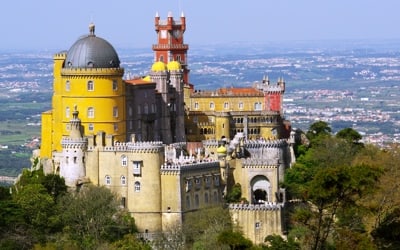
Collections
Sintra with Palaces
212 Activities
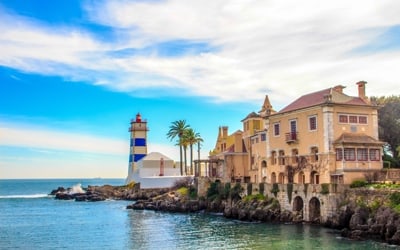
Collections
Cascais
153 Activities

Collections
Fátima
164 Activities

Collections
From Lisbon
116 Activities

Collections
Gourmet
170 Activities

Collections
Wine Tour
128 Activities

Collections
Walking Tour
96 Activities
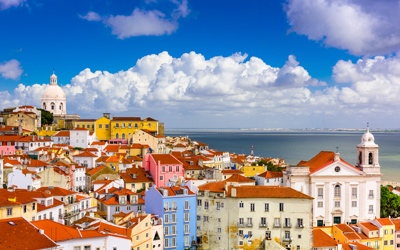
Collections
City Tour
138 Activities
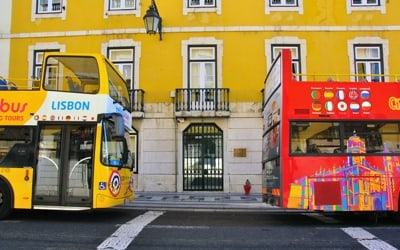
Collections
Bus Tour
50 Activities
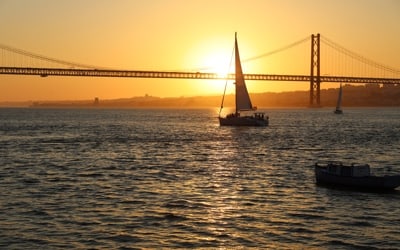
Collections
Lisbon Sunset
31 Activities

